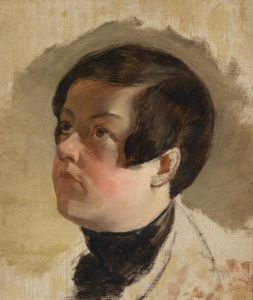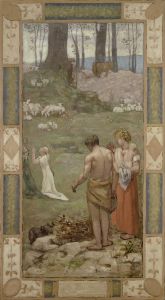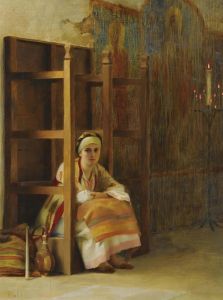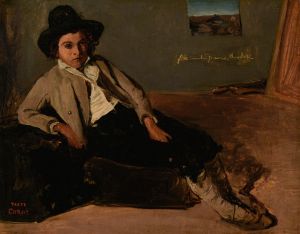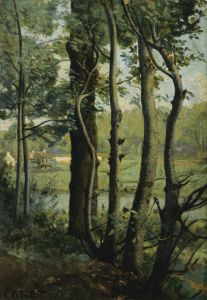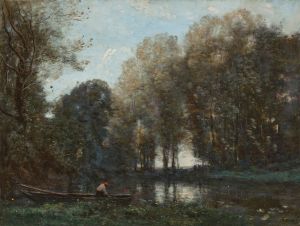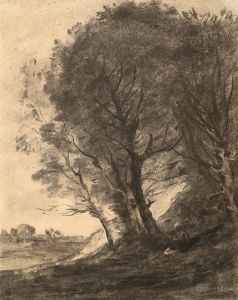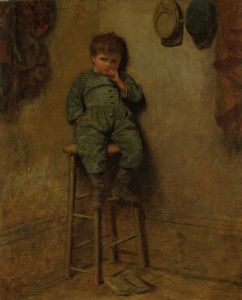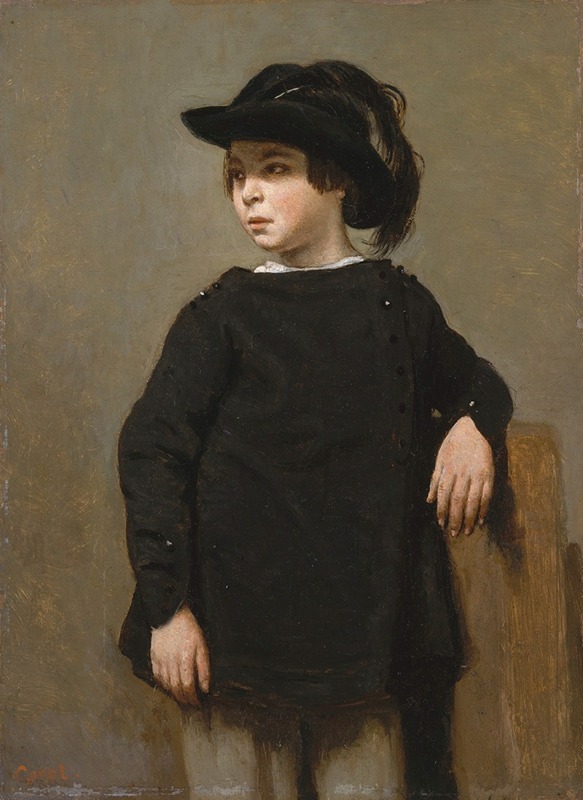
Portrait of a Child
A hand-painted replica of Jean-Baptiste-Camille Corot’s masterpiece Portrait of a Child, meticulously crafted by professional artists to capture the true essence of the original. Each piece is created with museum-quality canvas and rare mineral pigments, carefully painted by experienced artists with delicate brushstrokes and rich, layered colors to perfectly recreate the texture of the original artwork. Unlike machine-printed reproductions, this hand-painted version brings the painting to life, infused with the artist’s emotions and skill in every stroke. Whether for personal collection or home decoration, it instantly elevates the artistic atmosphere of any space.
Jean-Baptiste-Camille Corot was a prominent French landscape and portrait painter, associated with the Barbizon School, which was part of the broader Realism movement in 19th-century art. While Corot is primarily celebrated for his landscape paintings, he also produced a number of portraits throughout his career. One such work is "Portrait of a Child," which exemplifies his skill in capturing the essence and innocence of youth.
"Portrait of a Child" is a testament to Corot's ability to convey emotion and character through his brushwork and use of color. Although Corot is not as widely recognized for his portraiture as he is for his landscapes, his portraits are nonetheless significant in understanding the breadth of his artistic talent. In this painting, Corot employs a soft palette and delicate brushstrokes to highlight the gentle features of the child, creating a sense of intimacy and immediacy.
The painting reflects Corot's interest in the human figure and his ability to capture the subtleties of expression. The child's gaze is direct yet serene, inviting the viewer to engage with the subject on a personal level. Corot's use of light and shadow adds depth to the portrait, enhancing the three-dimensionality of the figure and providing a lifelike quality to the work.
Corot's approach to portraiture was influenced by his broader artistic philosophy, which emphasized the importance of capturing the natural world and the essence of his subjects. His portraits, much like his landscapes, are characterized by a sense of tranquility and harmony. This is achieved through his careful attention to detail and his ability to convey mood and atmosphere.
Throughout his career, Corot maintained a balance between his landscape and portrait work, often integrating elements of both in his compositions. His portraits, including "Portrait of a Child," demonstrate his versatility as an artist and his commitment to exploring different facets of the human experience. While his landscapes often depict the serene beauty of nature, his portraits offer a glimpse into the personal and emotional worlds of his subjects.
"Portrait of a Child" is a fine example of Corot's portraiture, showcasing his ability to blend realism with a subtle romanticism. The painting is not only a representation of the child but also a reflection of Corot's artistic vision and his dedication to capturing the beauty and complexity of life.
Corot's influence on the art world extends beyond his own work, as he played a significant role in the development of modern art. His approach to painting, characterized by a focus on light, atmosphere, and emotion, paved the way for future generations of artists, including the Impressionists, who admired his ability to capture the fleeting effects of light and color.
In summary, "Portrait of a Child" by Jean-Baptiste-Camille Corot is a notable work that highlights the artist's skill in portraiture. It reflects his broader artistic principles and his ability to convey the essence of his subjects with sensitivity and depth. Through this painting, Corot continues to be celebrated not only as a master of landscapes but also as a talented portraitist who contributed significantly to the evolution of 19th-century art.





